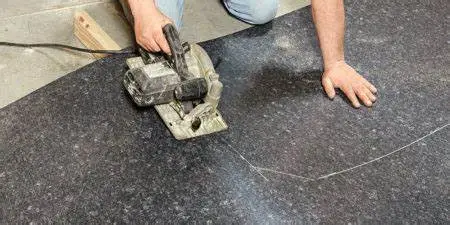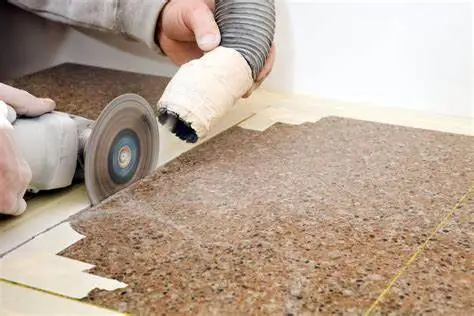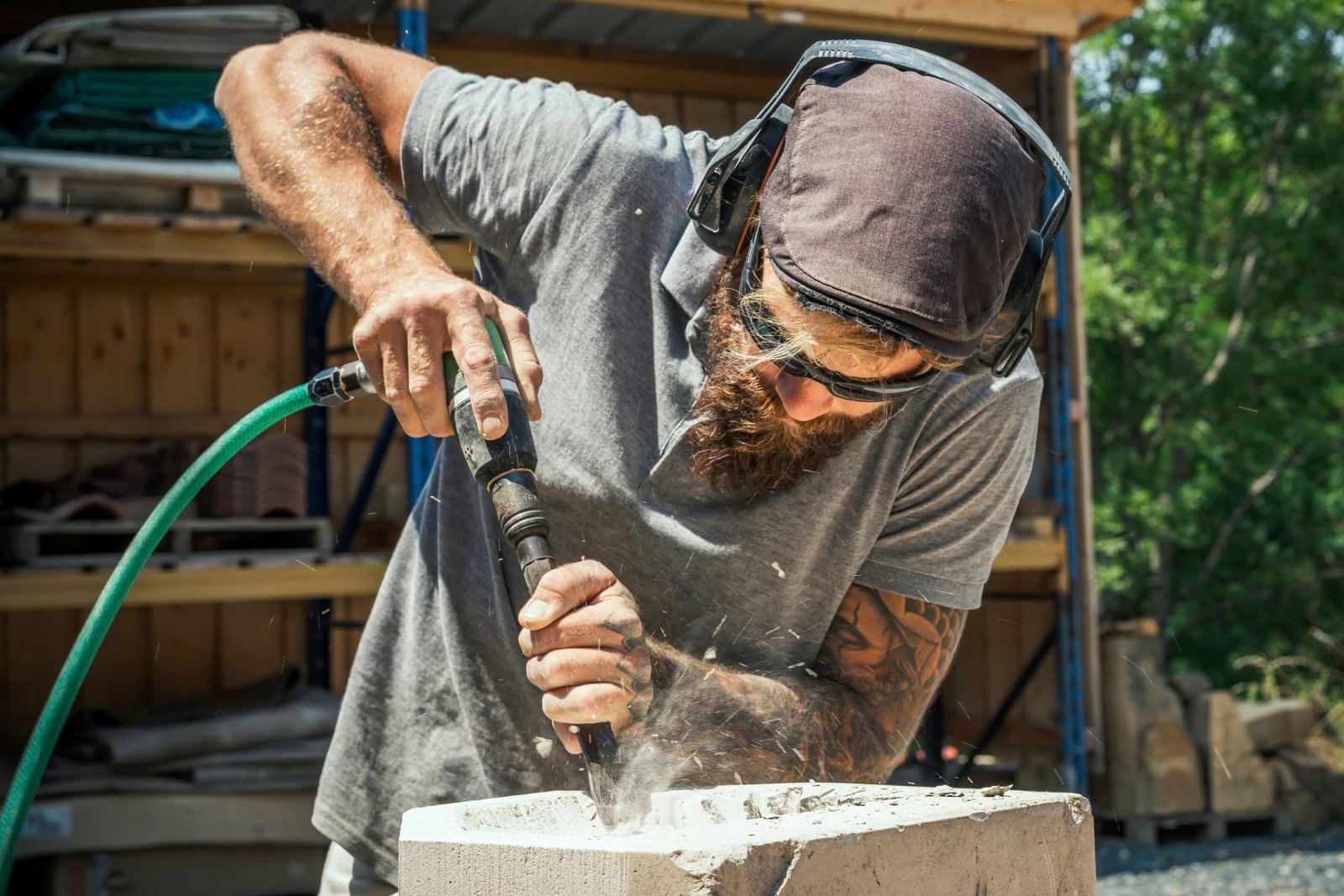
Cutting granite countertops may seem like a task only professionals can handle—but with the right tools, techniques, and safety measures
Cutting granite countertops may seem like a task only professionals can handle—but with the right tools, techniques, and safety measures, you can shape a granite slab to fit your kitchen or bathroom perfectly. Whether you’re installing a new countertop or modifying an existing one for a sink, cooktop, or faucet, precision is key when working with this dense natural stone.
This in-depth guide walks you through how to cut granite countertops accurately and safely while covering essential considerations like tools, slab prep, and maintenance after cutting.

What Is a Granite Countertop?
A granite countertop is a slab of solid natural stone, typically cut and polished for use in kitchens, bathrooms, and commercial spaces. It’s prized for its heat resistance, hardness, and the natural variety of granite countertop colors that suit any aesthetic—from modern to rustic.
👉 What Is a Granite Countertop?
Why Would You Need to Cut Granite?
Cutting a granite slab may be necessary for several reasons:
- Fitting around sinks or cooktops
- Adjusting length for custom cabinetry
- Trimming for a tight wall fit
- Creating backsplashes or waterfall edges
- Making outlet or faucet cutouts
Unlike laminate or wood countertops, granite requires specialized tools and a steady hand due to its strength and tendency to chip under poor handling.

Tools and Materials Needed to Cut Granite
Before you begin, gather the following tools and protective gear:
Cutting Tools:
- Circular saw with a diamond blade
- Angle grinder (for fine-tuning)
- Wet saw (recommended for precision and dust control)
Supporting Tools:
- Measuring tape & pencil or chalk
- Clamps
- Level & straight edge
- Sawhorses or padded supports
- Spray bottle with water or garden hose
Safety Gear:
- Safety goggles
- Dust mask or respirator
- Heavy-duty gloves
- Hearing protection
Always cut granite outdoors or in a well-ventilated area due to silica dust.
Step-by-Step: How to Cut Granite Countertops
Step 1: Measure and Mark the Cut Line
Accurate measurements are critical. Use a pencil or painter’s tape to clearly mark the area where you’ll make the cut. Double-check measurements for:
- Sink cutouts
- Backsplash angles
- Side wall clearance
- Countertop overhang
Use a straight edge or template for accuracy.
Step 2: Secure the Slab
Place the granite slab on sawhorses or a stable worktable with foam padding underneath to prevent cracking. Clamp the slab firmly in place to avoid shifting while cutting.
Avoid placing supports directly under the cutting line—let the slab hang freely in that area to reduce pressure.
Step 3: Use a Circular Saw with a Diamond Blade
Attach a diamond-tipped blade to your circular saw and set the depth just slightly greater than the slab thickness.
Tips for the Cut:
- Use water continuously (via spray bottle or garden hose) to cool the blade and reduce dust
- Score the granite first with a shallow pass, then deepen the cut
- Go slowly to avoid chipping
- Let the blade do the work—don’t force the cut
Step 4: Smooth and Finish the Edges
Use an angle grinder with a diamond polishing pad to smooth the edges after cutting.
Edge finishes like:
- Eased
- Beveled
- Bullnose
- Ogee (advanced)
…can be created with more time and the correct profile wheels.
You can also send the slab to a professional for precision edge profiling if you prefer.
Step 5: Clean and Seal the Cut Edge
After cutting:
- Wipe off debris using a soft cloth and mild cleaner
- Dry the granite completely
- Apply granite sealer to the newly exposed surface to prevent staining and moisture absorption
Resealing is especially important for cuts around sinks and faucets.
👉 How Much Does It Cost to Put Granite Countertop in a Bathroom?
Tips for Cutting Granite Safely and Accurately
- Always wear PPE (dust mask, goggles, gloves)
- Use wet cutting methods to minimize dust and blade wear
- Make multiple shallow passes instead of a single deep cut
- If uncertain about sink or faucet cutouts, use a professional fabricator
- Secure your slab properly to avoid shifting or breaking
Common Mistakes to Avoid
- Using a regular blade instead of a diamond blade
- Rushing the cut and causing edge chipping
- Forgetting to seal the cut edge
- Not supporting the slab properly during the cut
- Inaccurate measurement and poor templating
Post-Cut Maintenance and Upkeep
Once the granite is installed, it’s important to implement routine granite countertop maintenance:
- Clean with pH-neutral stone cleaner
- Avoid acidic or abrasive products
- Reseal every 12–24 months, especially around sinks
- Wipe up spills promptly to prevent staining
👉 How to Install Granite Countertop?
Granite Countertop Repair After Cutting
If your granite chips or cracks during cutting:
- Use epoxy resin kits to fill small chips
- Color-match fillers to your granite pattern
- For severe damage, consult a professional stone repair specialist
Avoid exposing freshly cut or polished edges to moisture before sealing.
Final Thoughts
Learning how to cut granite countertops safely and correctly can save you money while providing more flexibility in your renovation or remodeling project. With proper tools and preparation, you can handle basic modifications—though precision cuts and installations are often best left to professionals.
From enhancing your kitchen countertop layout to customizing your bathroom vanity, cutting granite gives you complete control over your design and layout.

